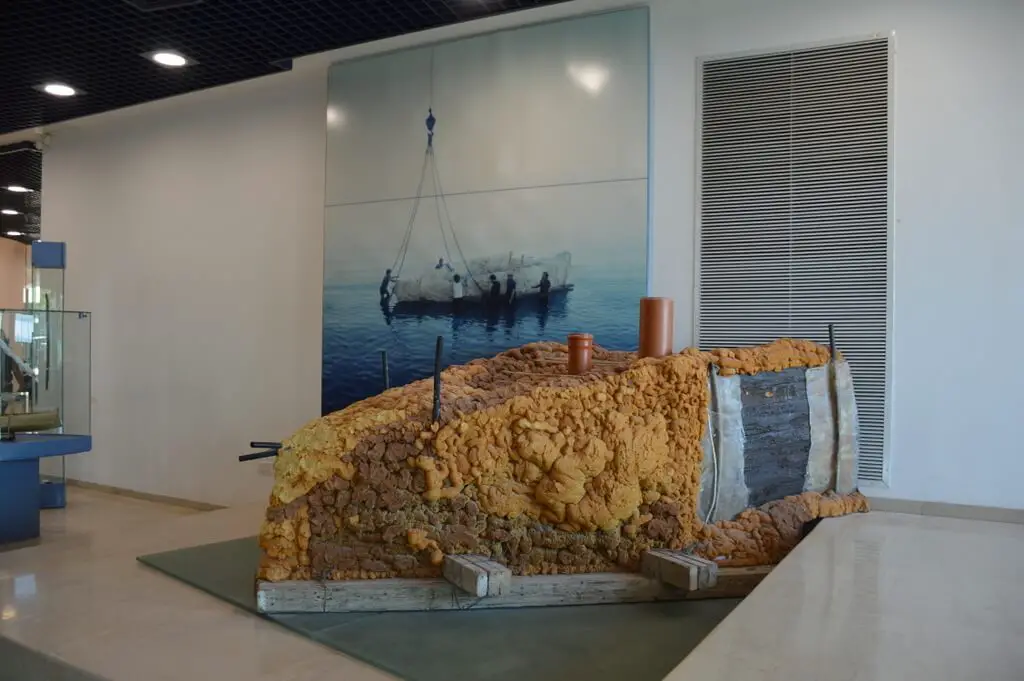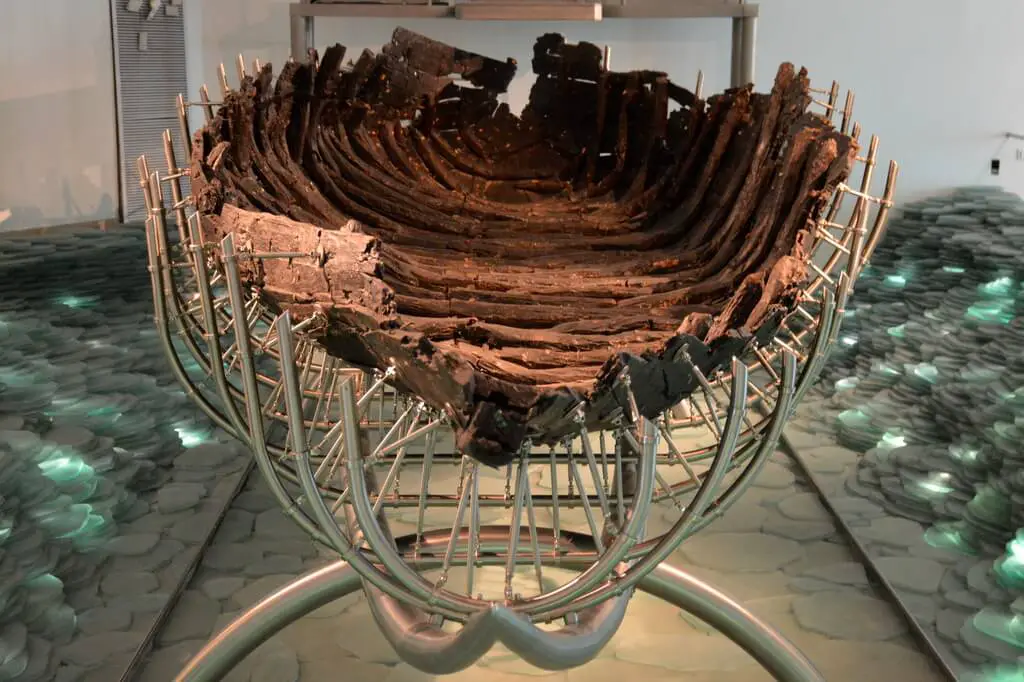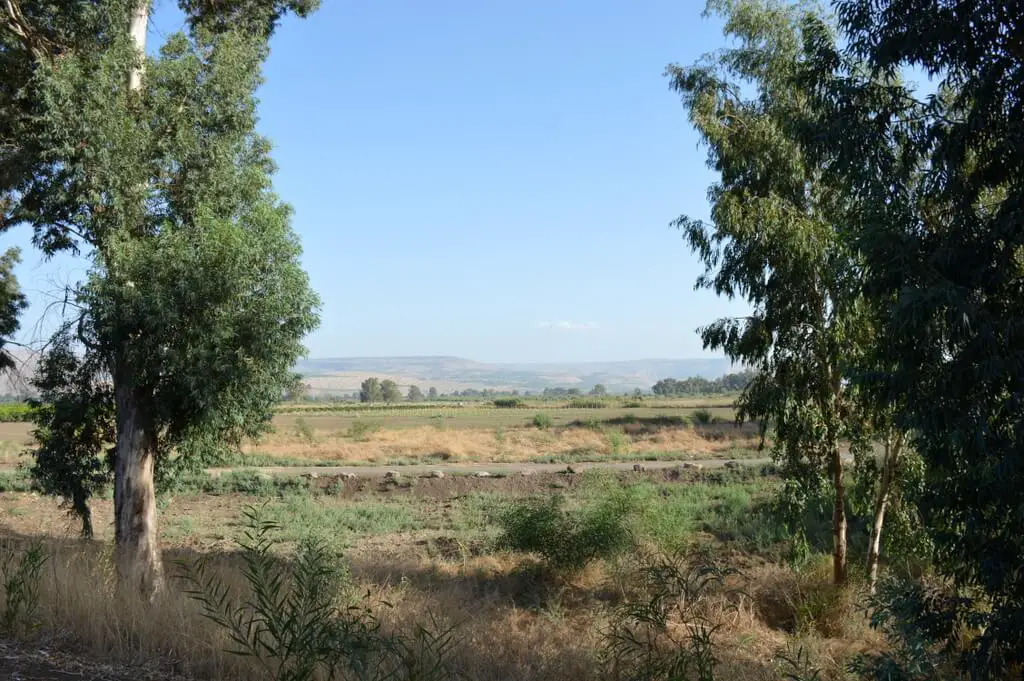It’s a hot and sunny Galilee day, 40 A.D. A fisherman wearing a pair of leather sandals casts out a net from a boat into the murky, calm waters of the Sea of Galilee. The catch—fresh musht, a species of white fish similar to tilapia—will be good, but not excellent. The fish will be clubbed over the head, dumped in a bucket, brought to shore, and sold at market to wives with woven shopping baskets. At night, the fish will be cooked across the village of Capernaum in one of two ways: it will be hung upside-down on large sticks over an open flame and smoked, or it will be roasted flat on a bed of hot coals. The moon will come out, and in a few hours, the fisherman will be back in his boat, doing the very same thing all over again.

The fisherman works year round, sometimes during the day, sometimes at night, sometimes both. He had to be an extremely versatile, hardy man—he was never a woman. Sometimes he used fishing hooks and spears, too, as the Old Testament recounts, but most often, he spent his days tossing seine nets into the waters several hundred yards from the shore and then dragging them back to shore, trapping unsuspecting fish in the net’s path. And, in addition to manning boats and tossing nets, he had to make and mend the nets, which broke easily and often under the weight of the heavier fish. Most commonly made of linen, these nets had to be meticulously cleaned and dried each day or would quickly rot, making them not only ineffective but cost-prohibitive.
At least, this is how the world of the fisherman is written about in various places in the Old and New Testaments of the Bible. Two of the most famous references occur in John 21: 1-14, in which Jesus produces a multitude of 5,000 fish from one net, and in Matthew 13: 47-48, when a scene of men casting nets into the sea is described in detail. Open any page in the Bible—you’d be hard-pressed not to find a reference connecting Jesus and his disciples with fishing.

Of course, it’s impossible to know exactly what it was like to work on the shores of the Sea of Galilee, among the rest of the fish hooks, broken spears, and ancient netting, but there is one artifact—one single, lonely artifact—that tells the story in a somewhat more palpable way than any remaining cracked spear or rusted fish hook, any anecdotal piece of evidence or eye-witness story. It’s a boat.
A man’s workplace.
A portable workplace, one would suspect, where the fisherman I described above probably spent the majority of his adult life. And it bobbed around in the sea over 2,000 years ago until it sank and spent two millennia at the bottom of the sea.
Today, it is propped up on stilts in the Yigal Alon Center (affectionately known as the Jesus Boat Museum) on Kibbutz Ginnosar on the shores of the Sea of Galilee in the northern part of Israel.

The boat is in its own room and is surrounded by sketches and drawings of how it would have been used 2,000 years ago.
Accidentally unearthed in the 1980s by two brothers on the kibbutz, Moshe and Yuval Lufan, the boat literally rocked the archaeological and spiritual world. No vessel in history had been discovered so completely, and no vessel that had ever been discovered matched the descriptions in the Bible so overtly. Nine meters long, a little over two meters wide, one meter high, with measurements perfectly suited for casting seine (the ancient linen fishing nets) into the sea. It is described in exactly this way in Matthew 13: 47-48. I won’t go into all the details of how they actually got it out of the sea, but I will say this: it involved hundreds of archaeologists, port authorities, air force personnel, historians, and modern-day fishermen, a lot of mud, and an immense amount of patience. For one thing, ancient wood turns to powder when it’s exposed to light and sun. For another, ancient wood can’t just be lifted out of water—it has to be packed, carefully, in wet mud (that can’t be allowed to dry, lest it cake onto the wood and break it), filled in with polyurethane foam (see below) to help it keep its shape, and scooped out from underneath.

The process was immensely painstaking, but the boat finally made its way back onto sandy shores it hadn’t seen in thousands of years. Mind-blowingly remarkable, right?
And here we are. Standing in front of a boat that looks a lot like the skeletal bones of a very large mammal, with ribs joined at the bottom by a long, rotting plank of dark-stained wood, the entirety of Israel comes pummeling toward me, like lightning. In almost an instant, next to this tired-looking, cracking, warped remains of a fishing vessel, I could see it: the man, rubbing sweat from his brow with his elbow in the sweltering Israeli noonday heat; the fish, flopping around in a bucket, their gills shining in the bright sun; the conversations, heavy and heated, as the men systematically flung the nets into the water and dragged them out, centimeter by centimeter.

Indeed: it’s remarkable that this boat has survived. It is not like it’s a pyramid of some great Egyptian King; it is not the illustrious summer home of King David, high up in Masada; it is not a Medieval castle nestled carefully away in the rolling hills of Scotland; it is not a statue of the Megalithic fat lady, her lower half perfectly preserved, on the islands of Malta and Gozo. It is a boat, an everyday object, made not to last millennia but instead to last perhaps a decade; two, at most.

There’s always a bizarre displacement that happens when an object becomes an artifact, a kind of dismembering, in a sense, of the thing’s original context and the sterility with which it’s carefully placed in a museum for all eyes to ogle at it. I felt this displacement last summer in Malta, when, at the behest of the European Union, her most beloved Megalithic places of worship, baking in the sun in its 6,000-year-old glory, was controversially—and out of necessity—covered up by huge tents to keep it from eroding past the point of no return. I had only known it before that in its fully exposed, sun-baked glow, so seeing the temple shaded and underneath a large grey tent startled me in a way I hadn’t anticipated. Seeing this boat, here, shook me in similar ways. I wondered, then, what of our things would be preserved in a museum 2,000 years from now, and what people would think about the jobs we had and the daily routines we led. I’m no fisherman, but I am someone whose trade has also been practiced since the time these boats were floating around. As I stood there, a final thought occurred to me: Our worlds are so temporary, and we are here for such a short time. Someone’s hands built this boat, piece by piece, drove the nails into the planks, straightened out the ribs, and tested it out in the water to make sure it would float. I wonder what he or she would think, seeing this simple man’s boat here on display for thousands upon thousands of pilgrims who come here seeking religious and spiritual enlightenment and understanding each year. Or what he or she would think, seeing that the descendants of the very trees that were used to craft the boat—a combination of oak and cedar—still grow wild along the path to the museum’s entrance and in its surrounding rolling hills.
Of course, it’s likely that Jesus himself didn’t sail around on this particular boat.
But someone did.

—
Article and photographs by Kristin Winet.
And most gracious thanks to Weill and the Israel Ministry of Tourism for hosting our stay in Israel and for introducing me to some of the world’s most incredible artifacts. If you’re interested in visiting Israel, they are a fantastic resource!
If you’d like to learn more about the Jesus Boat, I recommend you check out the following links:
http://cookingwiththebible.com
https://www.thattheworldmayknow.com/they-left-their-nets-behind
http://www.jesusboat.com

Another very interesting story by Kristin. The trip to Israel definitely left many impressions on you. Thanks for sharing this one.
Thank you, Ken! Ohh yes, it did. Just wait til I share all the photos with you 😀
Kristin